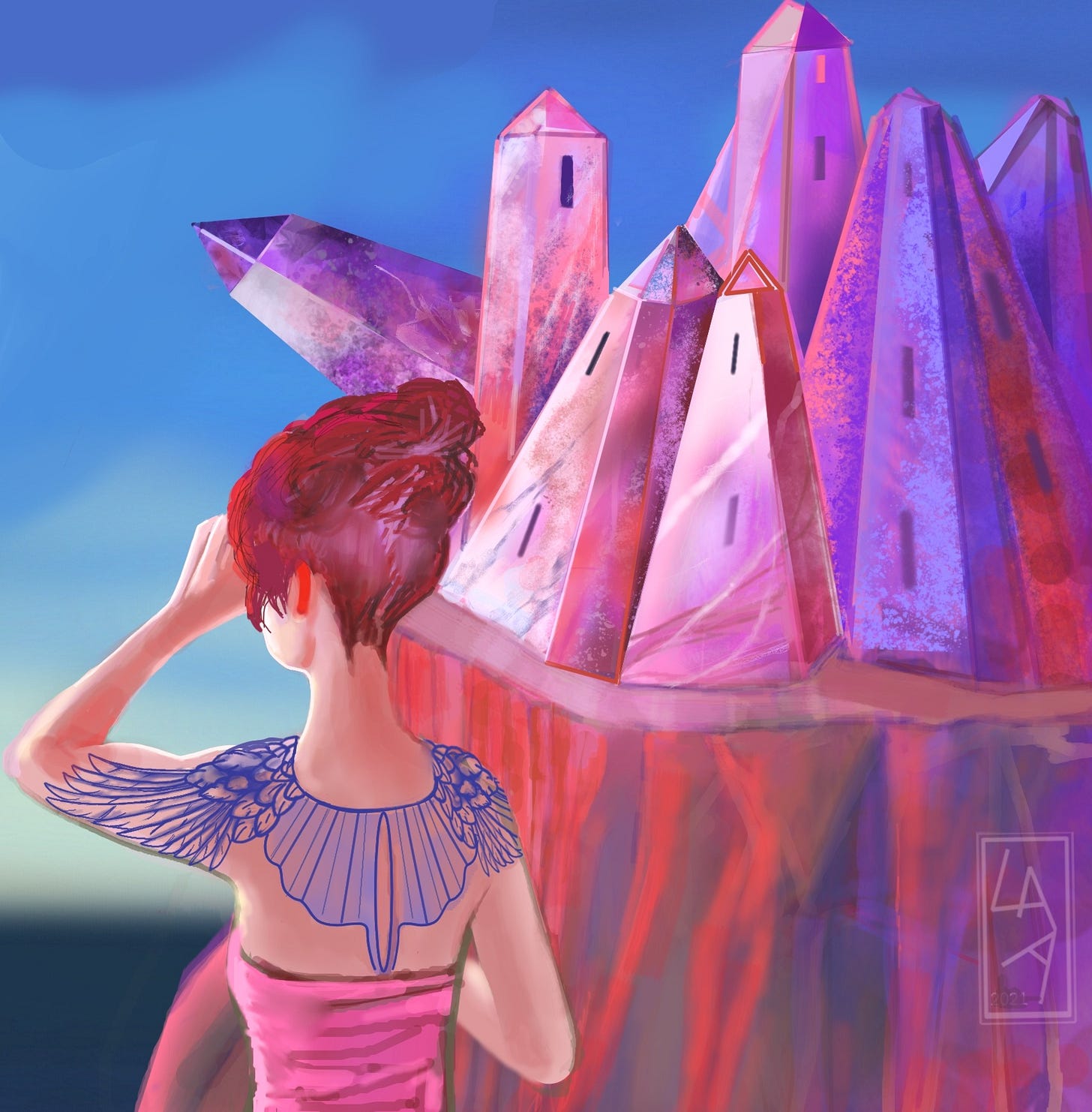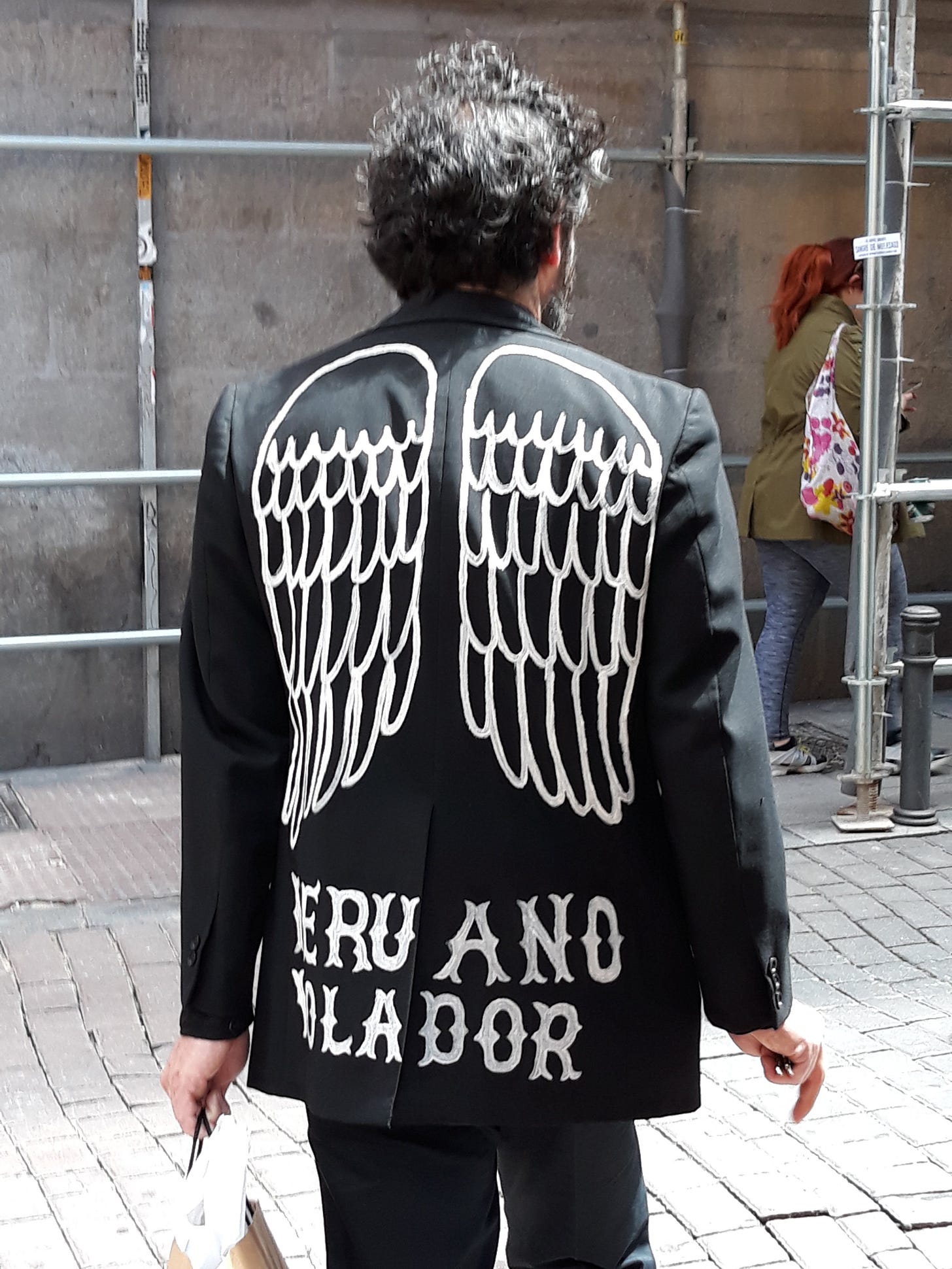I was messing around with fantasy worlds. I made some sketches just to visualize what I was thinking about. This is a practice of mine, even when I’m actually working in some other medium. I made playing cards once, out of the characters of a theatre adaptation of Reinaldo Arenas’s lovely novel, Singing From The Well. I was in charge of the music and soundscapes.
So later, for another non-theatrical project, I made this image of a woman looking out to sea, with a big tattoo across her back and arms of a pair of wings. A few months later I went down to Madrid, and I saw a guy who had painted wings in white paint with a flat brush on his black suit jacket. It looked cool in a way that the wing tattoo did not when I saw it a few months ago.
There was my concept sketch in the flesh.
I was dumbfounded
—then sort of aghast. My first reaction was that it was the corniest thing I’d ever seen, and as I thought back to the illustration, which I thought cool at the time, I wondered what was going on. Curiously, seeing these photographs mitigates what I felt on the the street when I took them. In other words, it doesn’t seem half as bad, and that is sort of a clue because what’s dampening the cringe effect I felt is that a photo is not actuality, just a representation of it.
If I remember the objection more precisely than ‘corny’, I would say that painting wings on a jacket worked in a way that the tattoo didn’t because it’s less precise as a representational image. Therefore it’s much more a sign for the concept of wings, made humorous by their overlay on conventional men’s attire, like saying, ‘As if’.
The illustration might work simply because it’s the most hypothetical of the three cases. It does not exist, in a world that never existed or ever will exist.
So that just leaves the tattoo. ‘Look everyone: I am a winged woman.’ Now we’ve got a new problem, and it resides not in visual art—the tattoo itself is awesome—but in language. To give wings to something/someone is an awful, awful cliche.
The same thing happens with winged horses. You might get away with it in fiction, but try to illustrate that and you are in a world of tacky imagery.
So all of this has to do with cliches—cliches and the problem of representing fantasy that is not dystopian. Dystopian is cool now in the sense that, sorry, it’s easy to push forward with impressive effect. We love to image worst-case scenarios because things can always get worse, and this brings with it a kind of sensationalism you can’t get from imaging cute stuff. Peter Jackson gave us hobbits against recorder flutes, but one is eighty years old and the other seven hundred years old.
Fallout made fun of living in underground vaults, while Silo is using the same concept to scare the bejezus out of us, and doing such a great job of it, that any subsequent use of the vault idea is pushing into cliche territory, which will be tougher than nuclear winter.
According to UNESCO 2.2 million books are published every year.
It seems we must run fast to get ahead of it or make peace with the cliche. Play with them like a baby in a high chair covered in spaghetti and meatballs.







